Giving Devon Transfer its own Tuesday Tour post may be a little bit of a joke, considering it is only a temporary station, nonetheless it is certainly worth a few minutes to check out. Intended to be in place for only six months, the transfer station facilitates passengers getting from the main New Haven Line over to the Waterbury Branch while Track 3 is currently out of service on the Devon Bridge for work. The v-shaped platform at Devon Transfer skirts the far end of the wye, allowing riders to essentially walk from the New Haven main line right over to the start of the Waterbury Branch and board their next train.
In some ways, Devon Transfer is not a true station – it is inaccessible to passengers in any form other than exiting a select main line train, or Waterbury Branch train. One cannot wait at Devon Transfer for any extended period of time – conductors, along with train masters and/or MTAPD are usually present to herd passengers from one side of the platform to the other and get on the connecting train, nor can one purchase tickets there. It does, however, have the typical trash bins one finds at Metro-North stations, lights for after hours, a public address system if ever necessary, as well as station name signs (I wonder who gets to keep these once work is done) on the platform. Utilizing the same wooden-style temporary platforms we’ve seen at other New Haven Line stations during track work, Devon Transfer is a decent substitute for keeping the Waterbury Branch running during the bridgework. In fact, it is arguably nicer than some of the permanent stations on the Branch (Ansonia‘s low-level platform comes to mind).
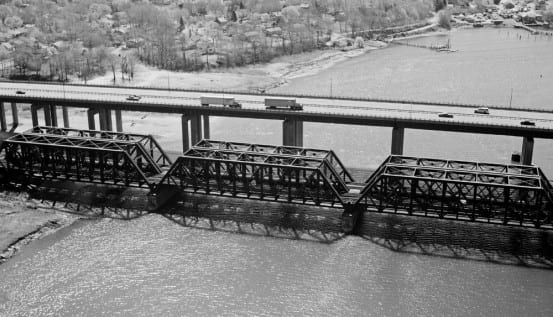
The Devon Bridge, currently undergoing work, with a six month expected outage on Track 3 (the one closest to the photographer in this picture). Aerial photographs of the Devon Bridge via the Historic American Engineering Record, Jack E. Boucher, photographer, taken April 1977.
For most passengers, the transfer at Devon is relatively convenient, with the exception of anyone coming from/going in the direction of New Haven, who would have to make an additional transfer at Bridgeport for their journeys. Additionally, all New Haven Line trains stopping at Devon will have an increased running time of about a minute, due to the extra stop. However, all of the work here is necessary to address one of the banes of the New Haven Line – its ancient movable bridges. Crossing the Housatonic River, the Devon Bridge (also known as the Housatonic River Railroad Bridge) is a 110 year old, 1,067-foot long rolling lift bascule bridge. It was prefabricated by the American Bridge Company in Trenton, New Jersey, and installed in 1905. Although less problematic as the notorious swing bridges on the New Haven Line (namely WALK), it is well in need of some attention. Suffering from the same lack of standardization found on many of the line’s movable bridges – each one being unique, with its own exclusive mechanical components – it requires custom created parts to fix.
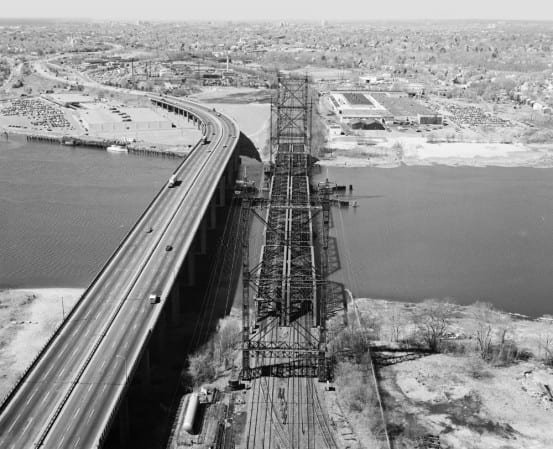
Why is Devon Transfer needed? Looking from the Milford side of the river toward Stratford, an aerial overhead view of the Devon Bridge. Track 3, which is currently out of service, is the track on the far right. Note the diverging track on the bottom right of the photo – this leads into the Waterbury Branch. Because of the track outage, this lead-in is inaccessible, necessitating the Devon Transfer station on the other side of the wye.
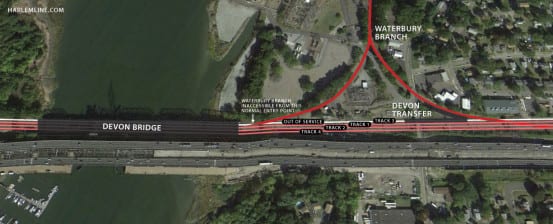
Diagram showing Devon Transfer, and how it bridges the gap between the out-of-service Track 3.
While Track 3 is out of service, the timber decking on that section of the Devon Bridge will be removed, the underlying steel will be repaired and replaced as necessary, and then new deck timbers will be installed, with the running rail reinstalled atop. The miter rails, which are integral to movable bridges, allowing the rails to connect and disconnect for movement, will be replaced. Once work on Track 3 is complete, it will return to service, and Track 1 will be taken out of service for repair, with the same process repeating itself. At that point, however, direct access to the Waterbury Branch from the main line will be restored, and Devon Transfer station will become obsolete.


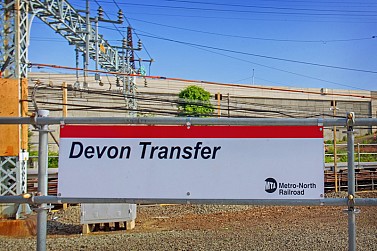
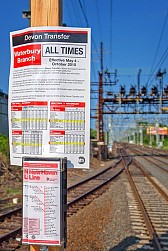
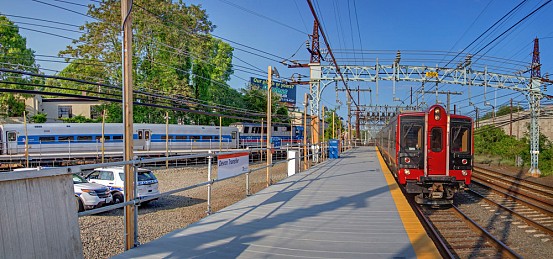
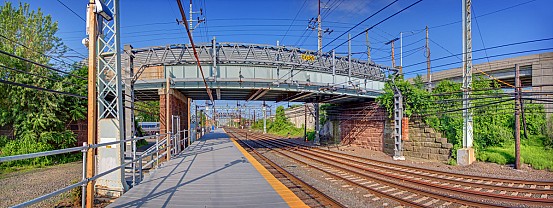
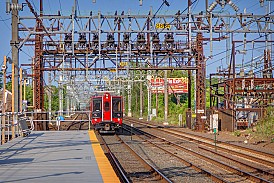
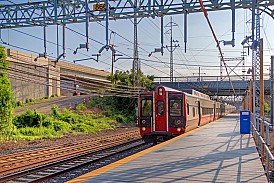
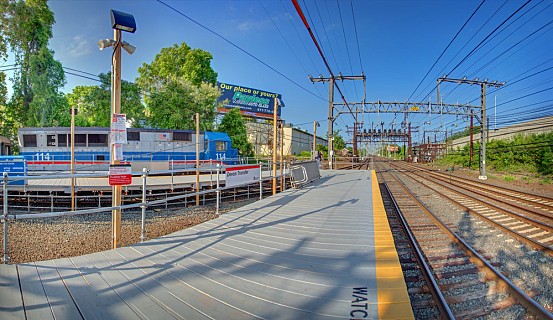
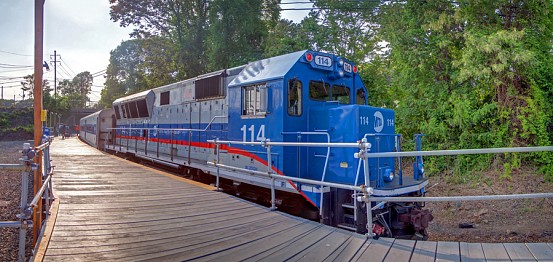
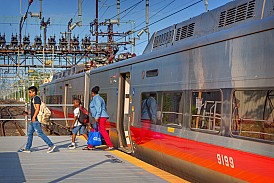
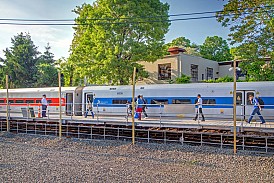
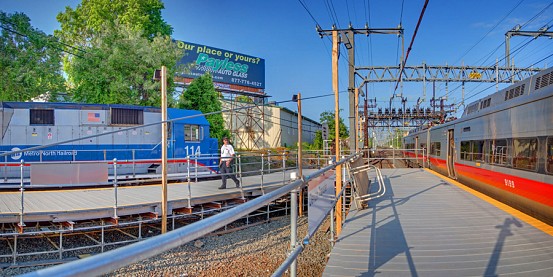
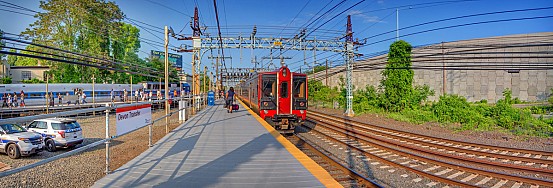
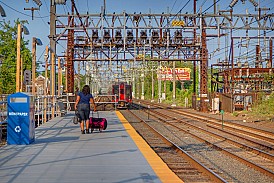
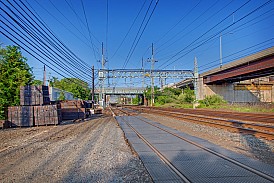
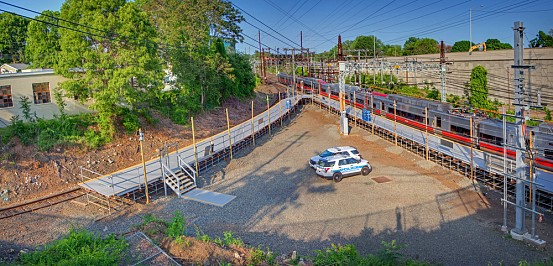
Actually I am really glad you did a whole study looks this. I love ephemeral stations — and captive ones. Not sure the platforms are still there at Manhattan Transfer, but I remember rolling past them on Amtrak and NJDOT trains in the early 70s.
Dr. Phil
In the early years of Metro North,they had a small fleet of TTX Flat cars used as platform
extensions where a track was out of service for an extended time.
Devon Transfer is built out of scaffold parts and wood.
It would make more sense to build a permanant station at Devon
to cut down the deadhead mileage, to/from Bridgeport -New Haven for service/fuel.
Interesting story. Thank you for sharing it.
The transformers on the catenary bridge (see pictures #8, #12, #16) seem very old, possibly even original. Would anyone know how old they are?
Trivia note: The American Bridge Co. site in Trenton, NJ, is now the site of the Waterfront Park baseball stadium, home of the minor league team, the Trenton Thunder. One old building was saved and rebuilt and how houses a restaurant/nightclub.
Thanks for this article. As a resident of Milford, I was quite confused. It looks like a regular station, but there is no way to access it from the road and was wondering what the deal was. Now I know.